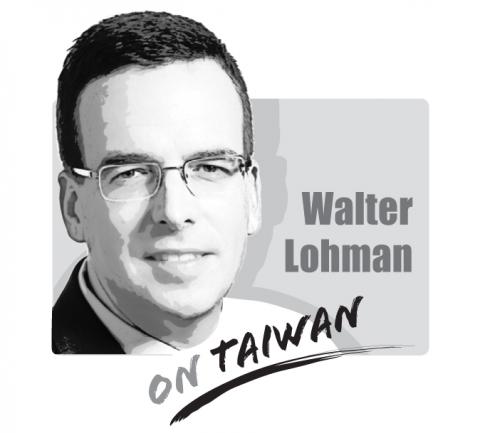Over the last couple of weeks, the US has entered into something resembling a trade war with China. It started with complaints about Chinese treatment of intellectual property (IP). But like the tariffs on steel and aluminum are not actually about national security, this quasi-war with China is not about IP.
So what is it about? To answer that you have to look at the views of those advocating it. They can be divided into two camps: economic nationalists and geopoliticians.
The economic nationalists see the US economy as a collective good. They speak in terms of “our” companies — whether or not they personally own stock in them. They talk about the sacrifice that some workers must take in order to benefit those who work in more “critical” industries. They are essentially central planners seeking, through government fiat, to reorder global value chains in ways that require greater industrial production in America.

Political party is not a reliable indicator of who might be an economic nationalist. Yes, they are well-represented in the upper reaches of the current administration, especially at the Office of the US Trade Representative (USTR) and the Commerce Department. Their weight is clear on a whole range of issues, from the above-mentioned steel and aluminum tariffs and pending auto tariffs to a dramatic increase in anti-dumping cases. But, in fact, the nationalists remain most comfortable on the Left, a position from which they have mounted opposition to virtually every American FTA.
The geopoliticians, by contrast, are mostly on the right. They share the collective mindset of the nationalists, and they define economic strength in a similar way. But their goal is different. For them, the strength of the American economy is not important as an end in and of itself; it is the sine qua non of great power competition with China. Their manifesto is the President’s National Security Strategy. That otherwise very sound document states very directly that “economic security is national security.”
This would all just be political science, though, if it were not for the real impact of their policy prescriptions. The problem is that their grand visions restrain the choices Americans can avail themselves of in structuring their businesses and ordering their households.
There is another way to approach China, one that can maximize the value Americans extract from the market, and at the same time, actually serve as a basis for addressing the real issue at hand, the security of IP in China.
It is an approach centered on economic freedom.
Its first rule is “economics is economics and politics are something else.” In the relationship with China, the US has to keep these separate. It cannot be naive. Beijing does have the aim of squeezing the US out of its leadership role in the Western Pacific. More concretely, the US and China have directly opposing interests in several of the region’s hotspots — Taiwan, North Korea, the East and South China Seas, and on the India-China border. Still, these differences need not interfere with the way the US conducts its economic relationship with China. It is challenging enough without a new layer of complexity.
No, the Chinese state-led capitalism does not lend itself to a similar firewall. But the US need not become more like China in order to secure its interests. There are costs to the mixed Chinese model, some of which, like environmental degradation and ballooning debt, are already apparent.
The second rule is “it is better to open markets than to close them.” If the US has a problem with market access in China, it should put them on the table, and use the leverage of its market to address them, not close its market with unilateral tariffs. Critics will say this has been tried and failed, and there is some truth to this. The Chinese repeat many of the same promises and never deliver. However, there has been incremental progress, in financial services, for example. Is it sufficient? No. But if the US is not seriously talking to them, it is difficult to shape outcomes.
The third rule is “when bilateral talks fail, go multilateral.” This means resort to the WTO. The US has more success at the WTO vis-a-vis China than current criticism of the body would lead one to believe. The CATO Institute has recently documented that on 21 out of 26 issues litigated against China since its entry into the WTO, “China’s response was to take some action to move towards greater access.” “There are no cases,” the report says, “where China has simply ignored rulings against it.” Still, where the WTO under-delivers — and it does — the US should work with trading partners like Japan, the EU, NAFTA partners and others to forge a common front to fix the WTO’s deficiencies. That is impossible when the US is skirmishing with them as well.
This brings us back to the matter that this quasi-war with China is ostensibly about, intellectual property protection. If this were really the issue, what would the free market alternative be to fixing it?
First, we have to acknowledge one uncomfortable fact. Not all the American companies who have given their technology to the Chinese are innocent victims. Joint ventures are more than Chinese schemes to bilk foreign companies. For some American companies sharing technology with their partners was part of their business plans. Granted, once a company is invested, it is unfair to hold that investment hostage to new demands. This is what makes China’s behavior egregious. But it is important to understand which companies were victimized and which went in knowing full well the price of entry.
Second, we have to put China’s abuses in some context. The US Chamber of Commerce’s International IP Index ranks China 25th out of 50 countries in terms of IP protection and enforcement. Granted, what China does on these issues is more consequential than some of the countries, like Russia and Thailand, that it outperforms. But its middling ranking is a good indication that the problem is not as dramatic as it is portrayed, and therefore subject to resolution.
Third, expand on the case the US has taken to the WTO. In addition to unilateral tariffs, the US has initiated a dispute settlement case at the WTO. In doing so, it made a point that unilateral action was necessary because some of its complaints fall outside the authority of the WTO. It is worth taking another look at this judgement. The EU has also filed a case, yet its case is broader, and it managed to pursue it without resort to unilateral sanctions.
Fourth, when it comes to cyber-espionage the US is well within its right to retaliate against the Chinese companies that perpetrate the theft and/or benefit from it. It should single out these entities and impose appropriate penalties on them.
Finally, the administration has to be clear and consistent that addressing Chinese IP abuses is its aim, not paring back Chinese industrial policy — which is unrealistic in any regard — or negotiating transactional arrangements designed to reduce the trade deficit — which is also unrealistic. If talks have any prospect of succeeding, they must narrow in on the matter at hand and set specific, detailed expectations.
A trade war with China may benefit a few select businesses in the United States. It will certainly damage many, their workers and the consumers that depend on the free flow of commerce. Even then, it will do nothing to fix the problem of China’s violation of intellectual property rights. To have the best prospects of doing that, while minimizing the impact of the effort, what’s needed is a different mindset — one that has at its heart less state-led design and more economic freedom.
Walter Lohman is director of the Heritage Foundation’s Asian Studies Center.
Concerns that the US might abandon Taiwan are often overstated. While US President Donald Trump’s handling of Ukraine raised unease in Taiwan, it is crucial to recognize that Taiwan is not Ukraine. Under Trump, the US views Ukraine largely as a European problem, whereas the Indo-Pacific region remains its primary geopolitical focus. Taipei holds immense strategic value for Washington and is unlikely to be treated as a bargaining chip in US-China relations. Trump’s vision of “making America great again” would be directly undermined by any move to abandon Taiwan. Despite the rhetoric of “America First,” the Trump administration understands the necessity of

US President Donald Trump’s challenge to domestic American economic-political priorities, and abroad to the global balance of power, are not a threat to the security of Taiwan. Trump’s success can go far to contain the real threat — the Chinese Communist Party’s (CCP) surge to hegemony — while offering expanded defensive opportunities for Taiwan. In a stunning affirmation of the CCP policy of “forceful reunification,” an obscene euphemism for the invasion of Taiwan and the destruction of its democracy, on March 13, 2024, the People’s Liberation Army’s (PLA) used Chinese social media platforms to show the first-time linkage of three new

If you had a vision of the future where China did not dominate the global car industry, you can kiss those dreams goodbye. That is because US President Donald Trump’s promised 25 percent tariff on auto imports takes an ax to the only bits of the emerging electric vehicle (EV) supply chain that are not already dominated by Beijing. The biggest losers when the levies take effect this week would be Japan and South Korea. They account for one-third of the cars imported into the US, and as much as two-thirds of those imported from outside North America. (Mexico and Canada, while
The military is conducting its annual Han Kuang exercises in phases. The minister of national defense recently said that this year’s scenarios would simulate defending the nation against possible actions the Chinese People’s Liberation Army (PLA) might take in an invasion of Taiwan, making the threat of a speculated Chinese invasion in 2027 a heated agenda item again. That year, also referred to as the “Davidson window,” is named after then-US Indo-Pacific Command Admiral Philip Davidson, who in 2021 warned that Chinese President Xi Jinping (習近平) had instructed the PLA to be ready to invade Taiwan by 2027. Xi in 2017